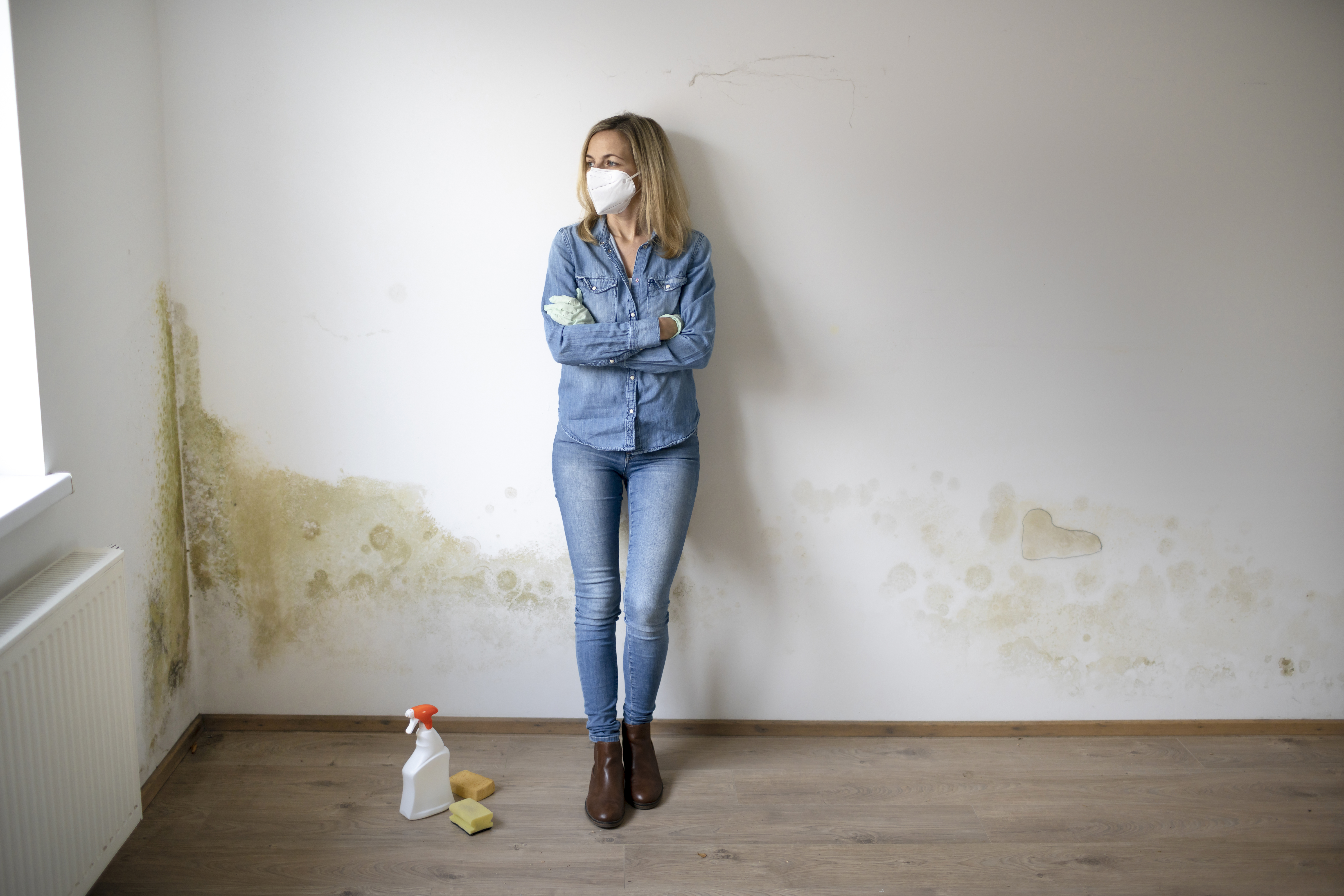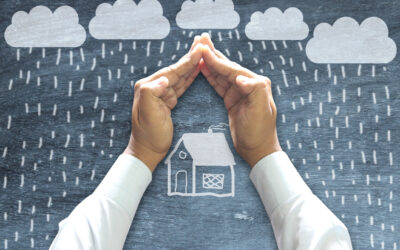Disasters from water, fire, smoke or mold can occur at any time. These types of disasters are not only stressful for property owners, but costly. Common restoration and mitigation timelines and repair estimates can increase drastically when unexpected asbestos materials are discovered, subrogation investigation occurs, air quality testing is needed, or when homeowners attempt to DIY. It’s important to understand the typical process and timelines; do’s and don’ts to pass on to policyholders; and how these additional problems can affect the bottom-line costs, and the restoration and mitigation process.
Broken pipes and hoses, sump-pump backups, appliance leaks, or toilet overflows occur in homes and businesses every day, and let’s not forget seasonal concerns such as ice dams, frozen pipes, flooding and hurricanes. And when they do, homeowners need to react—fast!Often, homeowners don’t realize how quickly mold will grow, wood floors will experience cupping and building materials will become saturated. The common misconception is, “If I don’t see water, it doesn’t exist.” But water easily finds its way between floorboards and baseboards, soaks concrete and drywall, and carpet pads will act as sponges to keep subfloors wet and delaminating carpets. Shop-vacs and standalone fans for DIYers aren’t powerful enough to create the airflow needed to thoroughly dry materials and belongings. That’s why we say: Don’t wait to mitigate!
Asbestos
Often, houses built prior to 1978 have asbestos-containing building material, which is included in tile flooring, joint compound, drywall, mastic (tile adhesive), vermiculite and pipe insulation, siding, and plaster. Even today, asbestos materials find their way into recently built or repaired homes because powerful storms and hurricanes cause supply-versus-demand struggles, and everyday supply-chain issues. When asbestos materials are suspected, the restoration company is required to stop its work until the testing of materials and proper removal and abatement occur. While each state’s laws can vary on who must be notified and how long this process might take (days to weeks), the abatement, containment and testing can increase claims by thousands of dollars and this unforeseen challenge immediately stops the drying process, creating potential for mold growth.
Ask the right questions
Information is a powerful tool to help restoration companies quickly and accurately assist clients and reduce costs. The more questions insurance professionals ask clients, the better prepared the restoration company will be with needed equipment, products, staff members and timeline needs. Helpful questions to ask include:
Set expectations
To set policyholders’ expectations, it’s helpful to share the three phases of the recovery process after a water loss:
| Phase 1 | Emergency response—job site inspection and assessment |
| Phase 2 | Water removal and drying—daily inspection of job progress |
| Phase 3 | Reinstallation, cleaning, and prevent spread of mold growth |
Mold remediation
No other disaster process is more misunderstood than mold remediation. (Mis)information on the internet and tales-of-old have led countless homeowners to overlook health effects, and DIYers to try to eradicate mold growth themselves by using bleach or paint (and becoming frustrated when these methods fail).They disbelieve how rapidly mold grows, the remediation process itself, and why some family members experience mold-related health struggles while others don’t, so let’s set the record straight.
Mold is more than a smelly nuisance. Indoor mold contamination has been identified as a major contributor to allergies and respiratory problems, property destruction, and poor indoor air quality, and there are over 100,000 unique types. Mold can grow in as little as 24-48 hours any time excessive moisture is present indoors—whether the result of a flood, a slow leak, broken pipe, or just high humidity—and quickly spreads as mold spores fly from room-to-room with even the slightest air flow, and a hot air/cooling system can transfer mold in attics and basements to other areas.
As mold multiples it releases chemicals called mycotoxins. These mycotoxins are especially harmful to seniors and children, diabetics, chemotherapy and surgery patients, allergy or asthma sufferers and others who are immune-suppressed. They cause itchy eyes, runny noses, coughing or wheezing, aggravation of asthma or allergies, skin rashes, headaches, drowsiness, congestion and more. It’s common for one household member to be more sensitive to mycotoxins and experience symptoms while others don’t. Those individuals with exposure concerns should avoid spaces and belongings with mold.
This pesky fungus can grow on virtually any organic material if oxygen and moisture/water are present. The growth requirements are:
Spore + Moisture + Temperature + Nutrient + Stagnant Air Flow = Mold Growth
When properties have noticeable mold, a thorough inspection is needed to verify and repair the water source. Inspectors use scope cameras as a non-invasive way to look for mold lurking behind walls, under floors and above ceilings.
When your client can’t see mold, but there is an earthy or mildew smell—or someone is experiencing reactions to the mycotoxins—then air-quality testing is helpful. These tests are completed by a certified professional, who typically takes at least three samples (depending on overall square footage)—including one outside the house—which will be overnighted to an accredited laboratory for definitive results and guidance on what areas require cleanup and removal.
Now that a restoration company knows where to begin, the priority is the safety of the homeowner and mold-removal technicians. Setting-up containment barriers with thick plastic sheeting prevents mold spreading to un-affected areas in a home. When mold growth is covering a space of over 10 square feet, PPE including respirators is required. Once safety precautions are in place, the technicians initiate the mold remediation.
| Method 1 | Remove standing water/repair source |
| Method 2 | Damp wipe topical mold |
| Method 3 | HEPA vacuum finite mold spores |
| Method 4 | Dispose of unsalvageable materials |
While it’s tempting to DIY, special expertise and PPE is needed for effective mold and mildew cleanup and removal. Bleach or other retail cleaning products will stir up and spread mold spores. Today’s bleach contains high levels of water and is banned by the U.S. Environmental Protection Agency for mold cleanup due to its ineffectiveness. The EPA has published a helpful guidebook for homeowners about mold cleanup and prevention of mold problems in homes. This booklet, “A Brief Guide to Mold, Moisture and Your Home,” is available on the EPA website (bit.ly/3uIYreU).
Fire damage
According to the National Fire Protection Association, U.S. fire departments respond to 1,000 home fires each day—that’s 42 per hour, costing $228 in damage every second. When a fire tragically strikes your policyholder’s home, or a faulty furnace causes a puffback, policyholders lose more than possessions—they lose peace of mind, and they often turn to you to restore both.
They don’t realize that even after the fire is out, several feet of water could remain in their lower levels, the structure may be unsafe to enter, or that damage to their home and belongings will continue as the smoke continues to burn. Materials that are found in furniture and flooring can be synthetic and when they are burned, it can result in complex chemical reactions. In just a few days, their treasured belongings go from cleanable to unsalvageable.
Whether the soot and smoke are a result of a simple fire creating dusty residue, a complex fire producing an oily residue, or a protein fire in which all the items require detailed surface cleaning, there are four important factors that can increase damage and claim costs:
No. 1: Time. The longer soot or odor sits prior to removal, the more difficult and more expensive it will be to remove.
No. 2: Humidity. It transports odor and causes chemical reactions to continue.
No. 3: Temperature and pressure. The amount of pressure is directly related to the temperature generated by the fire, and pressure-driven smoke will infiltrate all porous surfaces. As the fire’s temperature rises every 10 degrees, the air volume doubles, compressing the smoke molecules and increasing the soot into a wider range of surfaces.
No. 4: Materials affected. Generally, smoke residues from fires of natural origin, such as wood or paper, are easier and less costly to clean up. Fires of synthetic (plastic) or protein origin are more difficult and time-consuming. Some at-risk objects are comprise of brass, aluminum, chrome, marble, tile and porcelain.
Before a company can begin smoke mitigation to restore a home, several items need to be addressed. Fire departments will use thousands of gallons of water to extinguish flames, which often leave several inches to several feet of standing water for a restoration company to extract. Doors and windows may be destroyed and gaping holes in walls create a security challenge and need to be boarded up, along with tarping roofs and walls to protect against the elements. Once a structure is deemed safe to enter, belongings and personal items may need to be packed up and relocated, and dry-cleaning arranged, an alternative power source established, and emergency pre-cleaning of carpets and floors (to prevent smoke residue penetrating additional rooms) or treating at-risk surfaces and items with a corrosion inhibitor to protect against further smoke damage.
The insurance professional’s role is vital to establish whether simple smoke mitigation is possible or more extensive cleanup or demolition is needed. This can be determined from the additional questions you ask your policyholder. First ask, “Is everyone OK?” Items can be replaced—loved ones can’t. When a fire occurs, there may be an investigation or family arrangements that take precedent over beginning the mitigation process.
Your next question should be, “What burned?” Since various household items and materials have complex reactions including acid gases, it’s important to have as many details as possible about the objects affected and determine if an emergency pre-cleaning is needed.
Another good question is: “When did the fire happen?” If it has been several days or weeks, it’s probably beyond the point when mitigation can be accomplished, and everyone may need to plan for more costly restoration and/or reconstruction.
To help determine whether hydroxyl, ozone, thermal fogging or air scrubbers are needed, ask: “Is there a strong odor?”
It’s also a good idea to ask: “Did you begin cleaning items yourself?” Homeowners should avoid the temptation to DIY using retail products as this improper method will set the soot and escalate claim expenses and time.
Set expectations
To prepare your policyholders for the work ahead, it’s helpful to share the five phases of fire and smoke mitigation and restoration:
| Phase 1 | Emergency pre-cleaning |
| Phase 2 | Content cleaning |
| Phase 3 | Content inventory, packout and removal |
| Phase 4 | Wall, ceiling and floor cleaning |
| Phase 5 | Deodorization |
Once all phases of fire and smoke mitigation and restoration are completed and the technicians have cleaned and removed soot and smoke and restored the property, all content and possessions will be returned to the home.
The lines of communication
When an unexpected disaster strikes, the more information shared to-and-from your policyholder will help determine the accurate products and equipment, workforce, timeline, and critical actions needed, and ensure a prompt response that will reduce the severity of the claim, expenses and stress.
The restoration experts understand that suffering a loss may be a first for your policyholder, and they will guide them through the process to keep them and you informed every step of the way with advanced real-time technology.
Policyholders should be discouraged from attempts to clean and resolve the issue themselves and from delaying the needed mitigation or remediation services. After all, restoration companies are available 24/7 to help your clients in their time of need and begin the critical process of restoring their property to pre-loss condition.
This article originally appeared in the September 2022 issue of PIA Magazine.
Beth Markowski-Roop & Bob Sorensen
Beth Markowski-Roop is the marketing director and certified continuing-education instructor for ServiceMaster By Mason, with offices located in Connecticut and Rhode Island. For more information, visit www.servicemasterbymason.com. Bob Sorensen is the sales & marketing manager for ServiceMaster Superior Cleaning & Restoration Services Inc., located in Port Chester, N.Y. For more information, visit www.servicemastersci.com.






